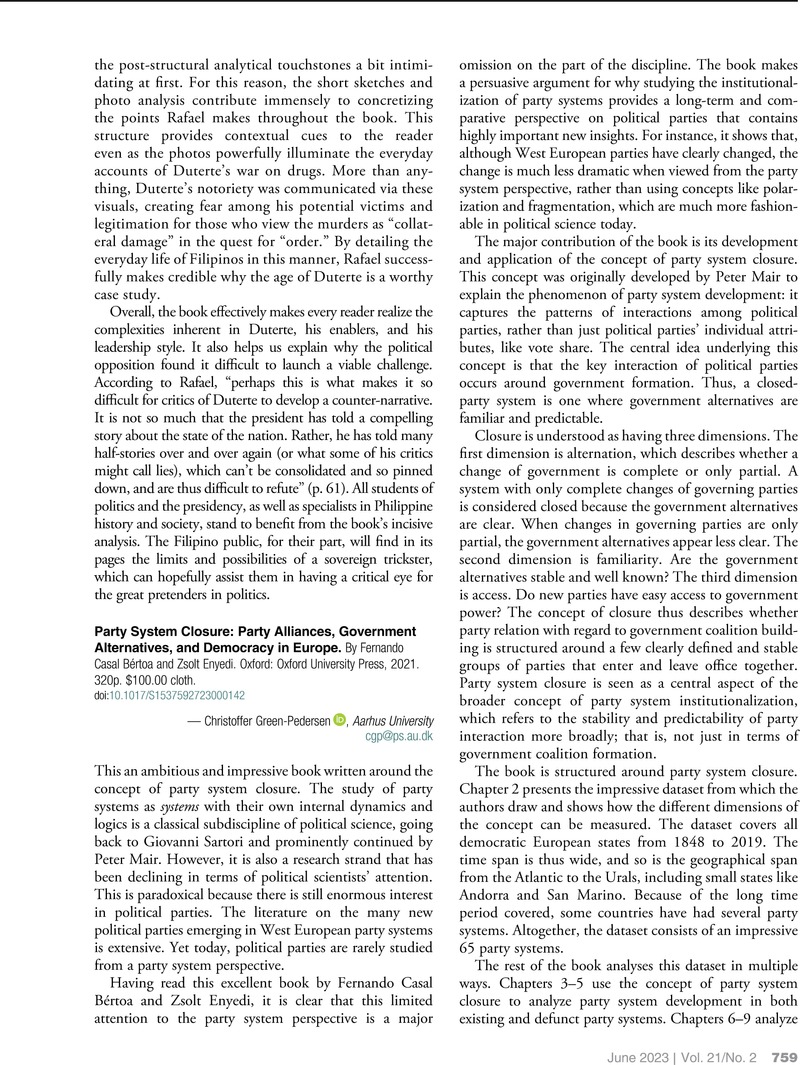No CrossRef data available.
Article contents
Party System Closure: Party Alliances, Government Alternatives, and Democracy in Europe. By Fernando Casal Bértoa and Zsolt Enyedi. Oxford: Oxford University Press, 2021. 320p. $100.00 cloth.
Review products
Party System Closure: Party Alliances, Government Alternatives, and Democracy in Europe. By Fernando Casal Bértoa and Zsolt Enyedi. Oxford: Oxford University Press, 2021. 320p. $100.00 cloth.
Published online by Cambridge University Press: 01 June 2023
Abstract
An abstract is not available for this content so a preview has been provided. Please use the Get access link above for information on how to access this content.

Information
- Type
- Book Reviews: Comparative Politics
- Information
- Perspectives on Politics , Volume 21 , Issue 2: Special Section: Green Political Science , June 2023 , pp. 759 - 760
- Copyright
- © The Author(s), 2023. Published by Cambridge University Press on behalf of the American Political Science Association

